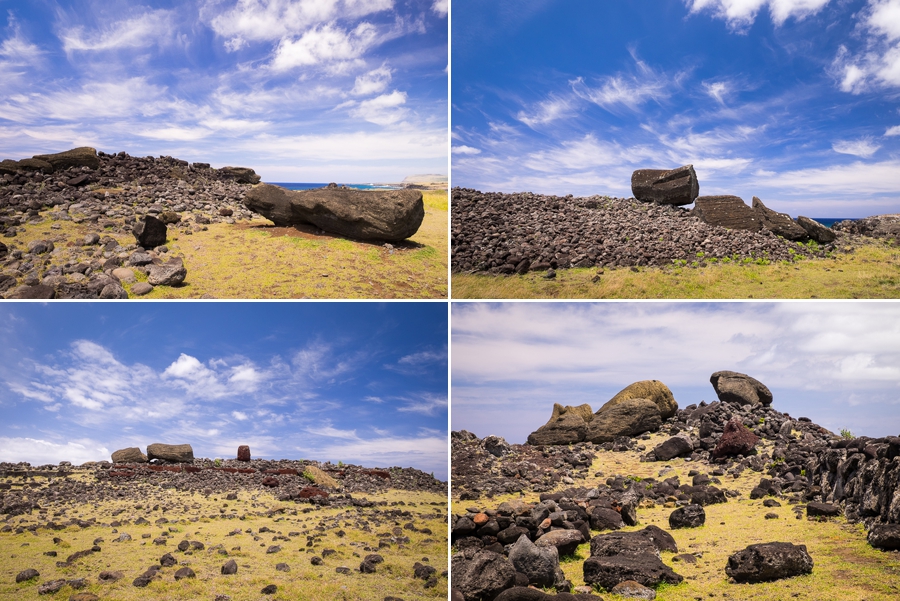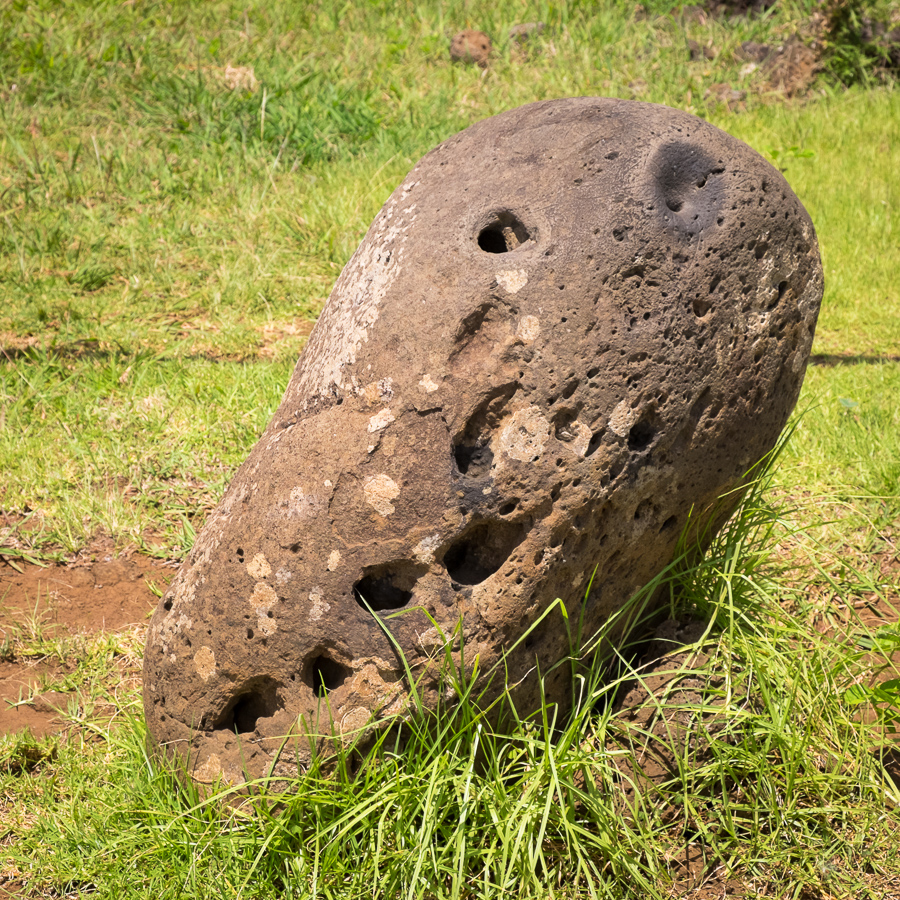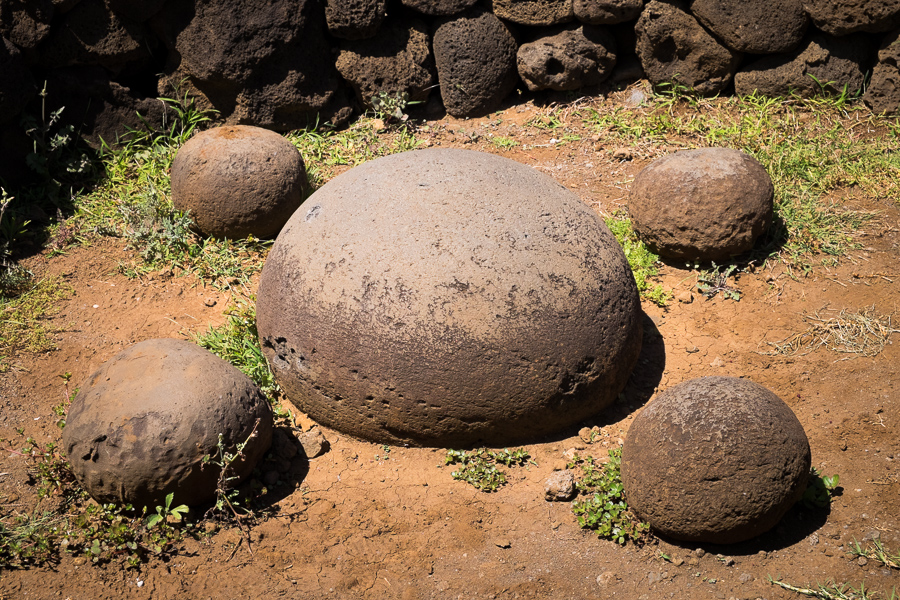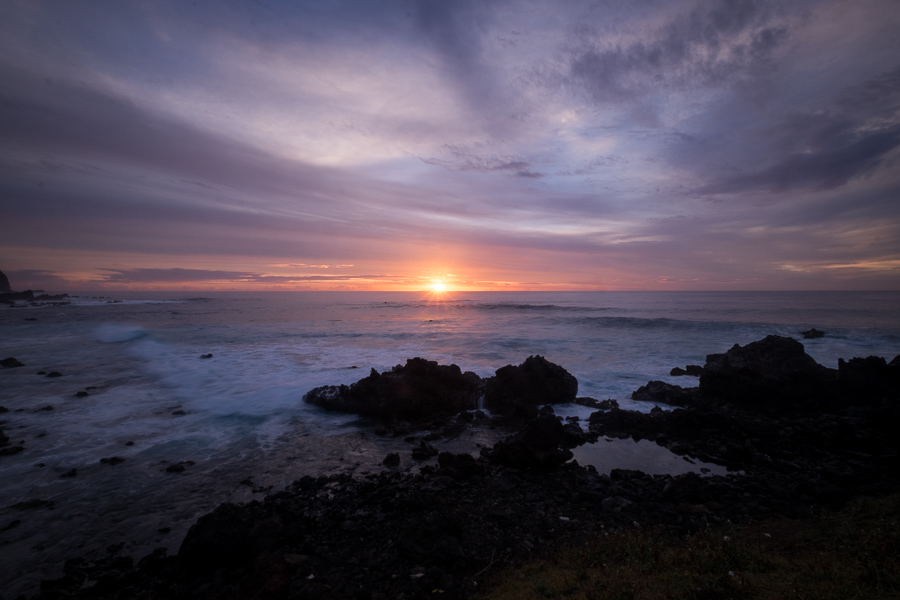I had always had a fascination for Easter Island (Isla de Pascua / Rapa Nui) ever since I was a kid, and made my first trip to the Island back in 2003. I stayed 5 days on that occasion and could not understand how the majority of people who were visiting said they were bored after only 3 days!

This year, Easter Island wasn’t originally part of my trip, but when I rearranged my ticket back in April (which ended up saving me some sectors on my round-the-world trip), there was something that kept calling me to go back – I couldn’t get the idea out of my head. So I used my “saved” sectors to get a “free” flight there (otherwise the flights are usually quite expensive).
Overcoming the inertia of hanging around in Santiago doing nothing was quite difficult, but I was so glad I decided to go to Easter Island again. I was there for 7 days this trip, had an absolutely awesome time (even better than last time) and could have easily stayed another week!
I think one of the reasons I enjoyed it so much was that I decided to hire an e-bike (i.e. a bike with a motor that can assist you when you want) from Easybici for 3 days to explore the island. Having never experienced an e-bike before, it was a little strange at first, but I’m a total convert – especially for this type of touring! Basically, it has 4 levels of assistance – no assistance (where it operates purely on your own leg power like a normal bike, though admittedly it is a VERY heavy bike), 30% assistance, 60% assistance or 90% assistance. You have to be in 4th or 5th gear to get the best out of the assistance, and you have to keep pedaling all the time, but it does make a huge difference!

And definitely gives you the opportunity for plenty of conversations! Everyone you meet is interested in how it works and what it’s like, both locals and other tourists. In fact, I think one group of Japanese tourists were more interested in me and my bike than they were with the Ahu they were visiting!
First day on the bike I decided to do the full day island loop (ie, the red loop in the map above). I figured that I’d get that in before I got a sore butt from the bike, and it would give me an idea on where I wanted to re-visit and when for the best light for photos.
After a bit of instruction on how to use the bike, and suggestions from Pablo about where I was likely to use the assistance and how to conserve the battery power, I donned my helmet and headed out of town. This day in particular, I was determined to use my own leg power for the majority of the ~45km, so it really did turn into a good workout – especially against the very strong headwind that blew directly against me for the first half of it. Still, I managed to only use a little assistance for part of the ascent out of town and I benefited from a few quick jabs at 60% assistance for a couple of small hills because, well, why not 🙂
I decided to skip the Ahus closest to Hanga Roa and return to them another day, so the first “popular” Ahu I called into on the bike was Akahanga, where I met my Japanese friends who were fascinated by me and my bike. This Ahu has not been restored, and is what the sites looked like when the European explorers arrived – Moais pushed over onto their faces and left where they fell.

Another bonus of biking Easter Island (rather than hiring a car) is that the slower movement really encourages you to stop more often and admire the views.

There are around 11 “key” sites on Easter Island that everyone visits, but there are also a lot of other “ruined” sites that get almost no visitors. Given I was on the bike and could see them from the road, I ended up visiting almost all of these not-so-popular sites as well. Along the south-west coast, these included: Hanga Hua Reva, Hanga Tetenga, Hanga Maihiku, One Makihi, Hanga Tu’u Hata (each map calls them differently it seems!)

This meant it was already 1pm by the time I reached Rano Raraku – the site where they carved the Moais out of the mountainside and a place where they limit the number of tourists on any particular day by restricting you to only 1 visit. I ascertained that the best light would be late afternoon and decided to skip until I could spend a good amount of time there on another day. Had lunch at Tongariki (another of the most famous sites), but revisited later in the week so will write about that one then 🙂
Used 90% assistance on the bike for first time to cut across the eastern end of the island and blew away two people walking their regular bikes up the hill 🙂 Actually, in the 5 days where I was out and about on the island, I saw less than 10 people on bikes – most hire cars.
Called in at Pu o Hiro – “a carved stone which was considered a talisman for fishing. According to certain traditions, sounds made by blowing through one of the stone’s holes attracted fish to the coast”, so said the signage.

and Papa Vaka, site of stone engravings, or petroglyphs, including tuna fish, sharks, canoes, hooks and octopus (as you can imagine, the sea and fishing was quite important!).

More ruined Ahus: Hanga Taharoa and Ahu Heki’l, before I arrived at Te Pito Kura, the site of the biggest Moai (10m tall, weighing 80 tons) ever placed on an Ahu. His red headpiece is also one of the biggest ever carved, and weighs in at 12 tons. This was one of the last Moai knocked down, sometime after 1838.

This site is also home to Te Pito Henua, or World’s Navel with its polished round stones.

Beyond this, I arrived at Anakena, another of the famous sites in Easter Island and the island’s main beach. There were loads of people there when I arrived – it was Saturday – but could only stay for about an hour before I had to head back towards Hanga Roa to return the bike (so I’ll write more about it in another post).
I still had all lights showing a full battery on the bike when I left Anakena and “90%ed” it all the way to the top of the rise 4km away. Then coasted down the other side and through all the stands of Eucalypt trees – a recent effort at reforestation. Easter Island was essentially completely denuded of trees before 1722, this being one of the theories about why the Rapa Nui culture collapsed.
Pablo was most surprised when I returned the bike with the battery still ¾ full. I asked him whether it recharged while I peddled, but apparently not. Not bad going for 45km, given I rarely ride a bike!
It was an amazing day of exploring this incredible island, which ended in a gorgeous sunset 🙂
